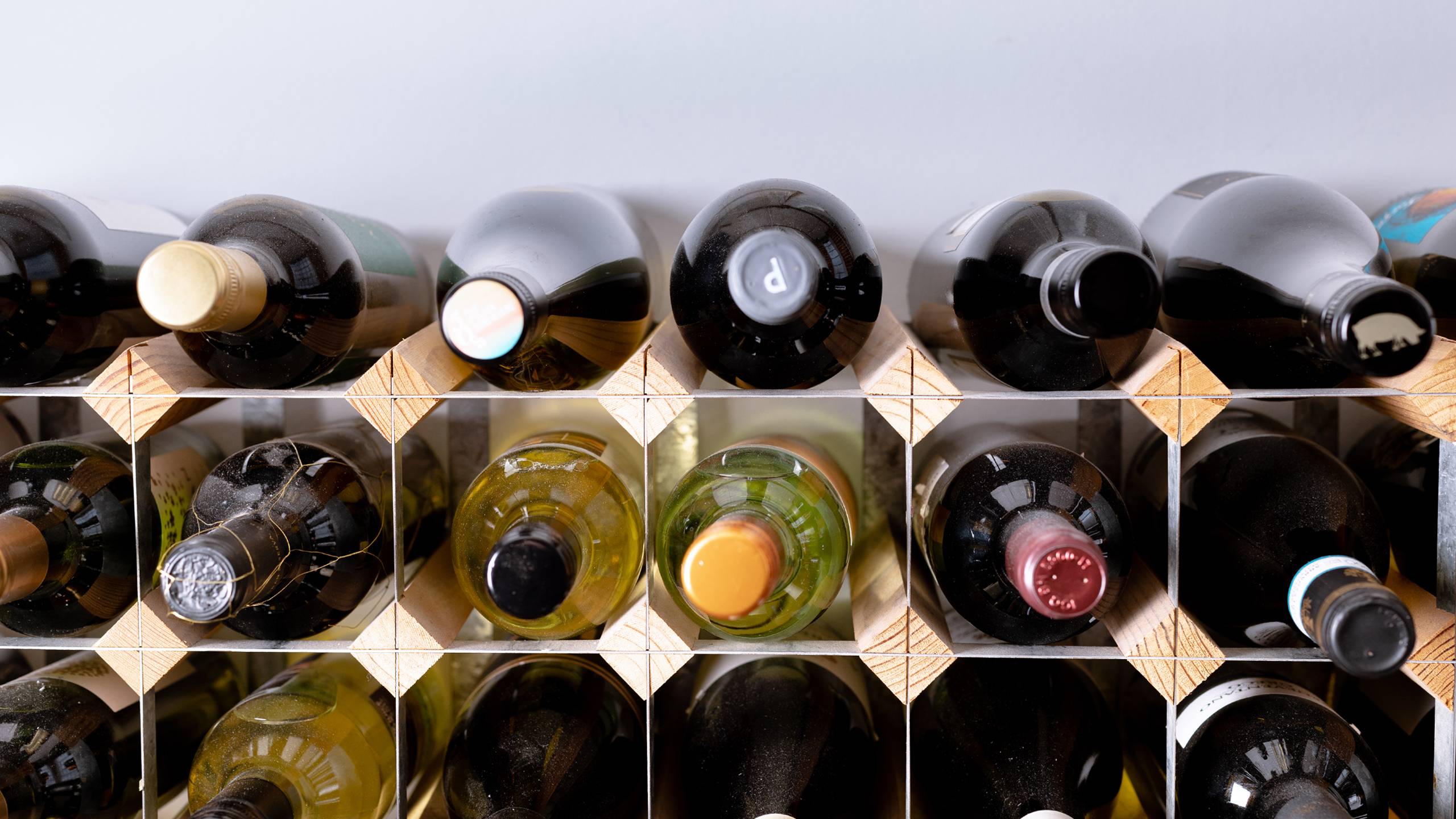

Articles
How To Store Wine Bottles
Modified: January 18, 2024
Discover the best tips and techniques for storing wine bottles in this informative articles. Learn how to preserve the quality and taste of your favorite wines.
(Many of the links in this article redirect to a specific reviewed product. Your purchase of these products through affiliate links helps to generate commission for Storables.com, at no extra cost. Learn more)
Introduction
Storing wine properly is essential to preserving its quality and ensuring that it ages gracefully. Whether you’re a wine enthusiast or a collector, understanding the principles of wine storage can help you maintain the integrity of your precious bottles. In this article, we will explore the various factors to consider when storing wine and discuss the different storage options available.
Proper wine storage involves more than simply placing bottles on a shelf or in a cabinet. Factors such as temperature, humidity, light exposure, and vibration can significantly impact the taste and longevity of your wine.
Without the right conditions, wine can develop faults, such as oxidation or a “corked” taste. Additionally, improper storage can cause the wine to age too quickly or spoil prematurely. To ensure that your wine matures gracefully and delivers the optimal tasting experience, it’s important to understand and implement proper storage techniques.
One of the key considerations when it comes to wine storage is maintaining a consistent temperature. Fluctuating temperatures can cause the wine to expand and contract, potentially leading to leakage or spoiling. In addition, extreme heat or cold can negatively affect the chemical reactions that occur during aging, altering the flavor profile of the wine.
Another crucial factor is humidity. The right humidity level prevents the cork from drying out and allows a small amount of air to permeate the bottle, aiding in the aging process. If the humidity is too low, the cork may shrink, leading to unwanted oxygen exposure. On the other hand, excessive humidity can cause mold or label damage.
Light exposure is also a concern in wine storage. Ultraviolet (UV) rays can degrade the wine by breaking down the delicate compounds responsible for its flavor and aroma. This is why wine bottles are typically made of tinted glass that offers some protection against UV rays. Nevertheless, it’s best to keep wine away from direct sunlight or strong artificial lighting.
Vibration can disturb the sediment in the bottle, affecting the wine’s clarity and flavor. It’s best to store wine in a place where it won’t be subject to excessive movement or shaking.
Now that we understand the importance of proper wine storage, let’s delve into the specifics of temperature and humidity requirements, explore different storage options, and discuss some essential tips for maintaining wine quality during storage. So, grab a glass of your favorite vintage, and let’s dive into the world of wine storage.
Key Takeaways:
- Proper wine storage involves maintaining consistent temperature, humidity, and minimal light exposure to ensure bottles age gracefully and maintain their desired characteristics.
- Avoid common mistakes such as fluctuating temperatures, light exposure, and overcrowding to optimize the preservation of your wine collection’s quality.
Read more: How To Store A Bottle Of Wine
Understanding Wine Storage
Proper wine storage is essential for preserving the taste, aroma, and overall quality of your favorite bottles. Whether you have a small collection of everyday wines or a carefully curated cellar, it’s important to understand the key principles of wine storage to get the most out of your investment.
Wine is a delicate and complex beverage that can evolve and develop new flavors over time. To achieve this desired evolution, it needs to be stored in an environment that provides optimal conditions. These conditions include maintaining a consistent temperature, controlling humidity, limiting exposure to light, and minimizing vibration.
Temperature is perhaps the most crucial factor in wine storage. Fluctuations in temperature can cause the wine to expand and contract, potentially leading to leakage or spoilage. It is generally recommended to store wine between 45°F (7°C) and 65°F (18°C), with a consistent temperature around 55°F (13°C) being ideal for most wines. Extreme heat can accelerate the aging process, while extreme cold can damage the wine through freezing or causing the cork to dry out.
Humidity is another important consideration. The ideal humidity range for wine storage is between 50% and 80%. Proper humidity levels help keep the cork moist, preventing it from drying out and allowing a small amount of air to enter the bottle. This air exchange helps with the aging process and allows the wine to develop complexity and depth of flavor. However, excessive humidity can lead to mold growth or damage to labels, so it’s important to monitor and control humidity levels in the storage environment.
Light exposure can be detrimental to wine. Ultraviolet (UV) rays can break down the delicate compounds in wine, resulting in unpleasant flavors and aromas. It is best to store wine in a dark or dimly lit area to minimize the wine’s exposure to light. Additionally, wines are often packaged in tinted glass bottles to offer some protection against UV rays.
Vibration can disrupt the natural aging process of wine and disturb the sediment in the bottle. Ideally, wine should be stored in a location where it won’t be subject to excessive movement or shaking. This is why wine cellars or coolers are often preferred, as they provide a stable and undisturbed environment for wine to mature.
Understanding these key factors is the foundation for proper wine storage. By controlling the temperature, humidity, light exposure, and vibration, you can ensure that your wine ages gracefully, with its complex flavors and aromas developing over time. In the following sections, we will explore the different types of storage options available to wine enthusiasts, as well as some essential tips for maintaining wine quality during storage.
Factors to Consider for Wine Storage
When it comes to storing wine, there are several factors to consider to ensure that your bottles remain in optimal condition. These factors include temperature, humidity, light exposure, vibration, and the positioning of the wine bottles. Let’s take a closer look at each of these factors.
1. Temperature: Wine should be stored at a consistent temperature to ensure that it ages properly and doesn’t degrade prematurely. The recommended temperature range for wine storage is typically between 45°F (7°C) and 65°F (18°C). Fluctuations in temperature can damage the wine, causing it to expand and contract, leading to leakage or spoilage. Extreme heat can accelerate the aging process, while extreme cold can freeze the wine or cause the cork to dry out. It’s important to choose a storage location that maintains a steady temperature within this range.
2. Humidity: Proper humidity levels are necessary to keep the wine cork moist and prevent it from drying out. The ideal humidity range for wine storage is between 50% and 80%. If the humidity is too low, the cork may shrink and allow excess oxygen to enter the bottle, resulting in oxidation. Conversely, excessively high humidity can lead to mold growth or damage the wine labels. It’s recommended to use humidity control systems, such as humidifiers or dehumidifiers, to maintain the desired humidity level.
3. Light Exposure: Wine is susceptible to light damage, especially from ultraviolet (UV) rays. UV rays can break down the delicate compounds in wine, causing undesired chemical reactions and resulting in undesirable flavors and aromas. To protect your wine, it’s advisable to store it in a dark or dimly lit area. If using glass cabinets or wine racks with exposure to natural or artificial light, consider using UV-blocking or tinted glass to minimize light exposure.
4. Vibration: Wine bottles should be stored in a place where they are not subject to excessive vibration. Vibrations can disturb the sediment in the bottle and prevent the wine from aging properly. Avoid storing wine near sources of vibration such as heavy machinery, speakers, or areas with frequent foot traffic. Wine cellars and coolers are designed to minimize vibration and provide a stable environment for aging your wine.
5. Positioning: The position in which wine bottles are stored can also impact their quality. When storing wine with a cork closure, it is generally recommended to store the bottles horizontally. This position keeps the cork moist, thereby preventing it from drying out and allowing air to enter the bottle. However, wines with alternative closures such as screw caps or synthetic corks can be stored upright without any adverse effects.
By considering these factors, you can ensure that your wine is stored in an optimal environment, allowing it to age gracefully and retain its quality. In the next sections, we will explore different types of wine storage options, including racks and shelves, wine refrigerators and coolers, and dedicated wine cellars or rooms.
Ideal Temperature and Humidity for Wine Storage
When it comes to storing wine, maintaining the ideal temperature and humidity levels is crucial. These factors play a significant role in preserving the quality and taste of your wine collection over time.
Temperature: The ideal temperature for storing wine is typically between 45°F (7°C) and 65°F (18°C). It is important to keep the temperature consistent and avoid significant fluctuations. Extreme temperatures can damage the wine, causing it to age too quickly or spoil prematurely. High temperatures accelerate chemical reactions, potentially resulting in cooked or “corked” flavors. On the other hand, low temperatures can slow down the aging process and inhibit the wine’s development of desired characteristics.
For most wines, a temperature of around 55°F (13°C) is considered optimal. This temperature allows the wine to age gradually, preserving its color, aroma, and flavor profiles. However, some wines, such as sparkling wines or dessert wines, may have specific temperature requirements. Sparkling wines are best stored between 40°F (4°C) and 50°F (10°C) to preserve their effervescence, while dessert wines may benefit from slightly cooler temperatures to maintain their sweetness.
It’s important to note that while a consistent temperature is key, slight variations within the recommended range are generally acceptable. However, rapid or frequent temperature fluctuations should be avoided as they can compromise the quality of the wine.
Humidity: Humidity levels are equally important in wine storage, as they impact the condition of the cork and help preserve the integrity of the wine. The ideal humidity range for wine storage is between 50% and 80%. Maintaining appropriate humidity levels prevents the cork from drying out and shrinking, which can allow air to seep into the bottle and cause oxidation. It also protects the labels from damage and prevents mold growth.
Low humidity can lead to a compromised seal and potential spoilage, while high humidity can promote mold growth and label deterioration. To control humidity, consider using a humidifier or dehumidifier, depending on the prevailing humidity level in your storage area. This helps ensure that the wine bottles are stored in the optimal conditions for aging and maintaining their quality.
It’s worth noting that while maintaining the ideal temperature and humidity levels is important for long-term wine storage, wines can still be enjoyed and consumed without strict adherence to these parameters. If you don’t have access to a dedicated wine storage facility, find the coolest and most stable area in your home, away from direct sunlight, heat sources, and excessive vibration.
By paying attention to the ideal temperature and humidity levels for wine storage, you can create an environment that allows your wines to age gracefully and retain their optimal taste and aroma. In the next sections, we will explore different types of wine storage options, including wine racks, refrigerators, and cellars, providing you with a range of choices depending on your needs and budget.
Choosing the Right Storage Location
When it comes to storing wine, choosing the right storage location is crucial for preserving the quality and longevity of your bottles. The ideal storage location should provide a controlled environment with stable temperature and humidity levels, minimal light exposure, and limited vibrations. Here are some factors to consider when selecting the right storage location for your wine collection:
1. Temperature Stability: Look for a storage location that maintains a consistent temperature within the recommended range for storing wine. Fluctuating temperatures can cause the wine to expand and contract, leading to potential leakage or spoilage. Avoid areas prone to temperature variations, such as kitchens, garages, or attics. Instead, opt for a space that remains relatively cool and stable throughout the year.
2. Humidity Control: The storage location should also have adequate humidity control. As mentioned earlier, the ideal humidity range for wine storage is between 50% and 80%. Avoid areas with excessively high humidity that can promote mold growth, as well as locations with low humidity that can cause the corks to dry out. Consider using a humidifier or dehumidifier to maintain the desired humidity level if necessary.
3. Limited Light Exposure: Wine is sensitive to light, especially UV rays, which can degrade the wine and affect its flavor and aroma. Choose a storage location away from direct sunlight or strong artificial lighting. If storing wine in glass cabinets or open shelves, consider using UV-blocking or tinted glass to minimize light exposure.
4. Vibration-Free Environment: Vibrations can disturb the sediment in the bottle and disrupt the aging process of the wine. Select a storage location that is away from sources of excessive vibration, such as heavy machinery or areas with frequent foot traffic. Ideally, the storage area should be quiet and undisturbed.
5. Adequate Space: Ensure that the chosen storage location has enough space to accommodate your wine collection and allow for easy access to individual bottles. Proper spacing between bottles allows for air circulation and reduces the risk of accidental breakage when retrieving bottles. Consider the size and layout of the storage area before deciding on the storage system or furniture you will use to store your wine.
6. Accessibility: While it’s important to choose an optimal storage location, it’s also crucial to consider accessibility. You want to be able to easily access and enjoy your wines without significant effort or inconvenience. Consider your lifestyle and preference when selecting a storage location, whether it’s a dedicated wine cellar, a wine refrigerator, or a specific area in your home.
7. Security: Lastly, consider the security of the storage location. If you have valuable or rare wines, you may want to ensure that the storage area is secure and protected against theft or unauthorized access. Lockable cabinets or rooms with limited entry can provide an extra layer of security for your wine collection.
By considering these factors and choosing the right storage location, you can create an ideal environment for your wine collection. In the next sections, we will explore different types of wine storage options, including wine racks, refrigerators, and cellars, to help you find the best storage solution for your needs and budget.
Read more: How To Store An Opened Bottle Of Wine
Types of Wine Storage Options
When it comes to storing your wine collection, there are various options to choose from, depending on your needs, space availability, and budget. Let’s explore some of the most popular wine storage options:
1. Wine Racks and Shelves: Wine racks and shelves are versatile and popular storage options for wine enthusiasts. They come in a variety of materials, such as wood, metal, or acrylic, and can be designed for both small and large collections. Wine racks and shelves allow you to store your bottles horizontally, keeping the corks moist and allowing for proper aging. They are typically compact and space-efficient, making them suitable for homes with limited space.
2. Wine Refrigerators and Coolers: Wine refrigerators and coolers are specifically designed to provide optimal temperature and humidity control for wine storage. These units come in various sizes to accommodate different collection sizes. Wine refrigerators create a controlled environment with consistent temperature and humidity, helping to preserve the quality and aging potential of your wines. They are a popular choice for wine enthusiasts who want dedicated storage with precise temperature control.
3. Wine Cellars and Wine Rooms: Wine cellars and wine rooms offer the ultimate storage solution for serious wine collectors. These custom-built spaces provide ideal conditions for long-term wine storage. Wine cellars can be built in a basement, garage, or as a standalone structure, with insulation, climate control systems, humidity control, and proper lighting. Wine rooms are typically larger and can incorporate additional features such as tasting areas or storage for wine accessories. These options are more expensive and require professional planning and construction but offer the most comprehensive and customized storage solution.
4. Wine Cabinets: Wine cabinets are a combination of storage and display. They are typically enclosed, offering protection to your bottles from light and temperature fluctuations. Wine cabinets can be freestanding or built-in and often feature glass doors to showcase your wine collection. They provide an elegant and functional storage solution for those who want to display their wine while maintaining optimal storage conditions.
5. Storage Boxes and Cases: Storage boxes and cases are often used for short-term storage or transportation of wine bottles. These can be cardboard or wooden boxes designed to hold multiple bottles securely. They are useful if you need to move or transport your wine collection or as a temporary storage solution until a more long-term option is available.
6. Wall-Mounted Racks: Wall-mounted racks are a space-saving storage option that can add a decorative element to your living space. These racks are mounted on the wall and offer a stylish way to store and display your wine collection. Wall-mounted racks come in various sizes and designs, making them suitable for both small and large collections.
Consider your storage needs, available space, and preferences when choosing the right storage option for your wine collection. It’s important to prioritize temperature and humidity control to ensure that your wines age gracefully and maintain their quality. Additionally, proper organization and protection from light and vibration are also key considerations.
In the next sections, we will discuss different types of wine storage accessories and provide essential tips for properly storing wine bottles to enhance their longevity and enjoyment.
Wine Racks and Shelves
Wine racks and shelves are popular storage options for wine enthusiasts due to their versatility and functionality. They provide an efficient and organized way to store and display your wine collection while ensuring proper aging and easy access. Let’s take a closer look at wine racks and shelves:
Types of Wine Racks:
Wine racks come in a variety of styles and materials, allowing you to find the perfect fit for your space and aesthetic preferences. Here are some common types of wine racks:
1. Wooden Wine Racks: Wooden wine racks are a classic choice that adds a touch of elegance to any space. They are available in various wood types, such as pine, oak, or mahogany, and can be designed as stackable units or modular systems. Wooden wine racks provide excellent stability and durability, ensuring that your wine bottles are held securely in place.
2. Metal Wine Racks: Metal wine racks offer a sleek and modern look. They are often made from stainless steel, wrought iron, or aluminum and can be designed as wall-mounted racks or freestanding units. Metal wine racks are known for their durability and strength, and they can accommodate a large number of wine bottles while taking up minimal space.
3. Acrylic Wine Racks: Acrylic wine racks are a contemporary and minimalist option. They are lightweight and transparent, allowing the bottles to become the focal point. Acrylic racks are versatile and can be used as standalone units or integrated into other furniture pieces. They are an excellent choice for small spaces or modern interiors.
Benefits of Wine Racks and Shelves:
1. Proper Storage Orientation: Wine racks and shelves allow you to store your bottles horizontally, keeping the corks moist and preventing them from drying out. This orientation ensures that the wine remains in contact with the cork, creating a proper seal and minimizing the risk of oxidation.
2. Easy Access and Organization: Wine racks and shelves make it easy to organize and locate your wine bottles. You can arrange them by region, varietal, or personal preference, allowing for efficient access when selecting a bottle for enjoyment.
3. Space Efficiency: Wine racks and shelves are designed to maximize space utilization, making them ideal for small apartments or houses. They can be customized to fit into nooks and corners, taking advantage of underutilized spaces and turning them into functional storage areas.
4. Visual Appeal: Wine racks and shelves can serve as decorative elements in your living space. Whether you choose a traditional wooden rack or a sleek metal design, they can enhance the aesthetics of your room and showcase your wine collection as a statement piece.
5. Expandability: Modular wine rack systems offer the advantage of expandability. You can start with a small unit and add on as your collection grows. This flexibility allows you to adjust and adapt your storage space to accommodate your changing needs.
When selecting a wine rack or shelf, consider factors such as the size of your collection, available space, and desired aesthetic. Pay attention to stability, durability, and ease of assembly if you are opting for a self-assembled unit. Additionally, consider the location of the wine rack or shelf in terms of temperature and light exposure to ensure optimal storage conditions.
Whether you choose a beautiful wooden wine rack or a sleek metal design, investing in a quality wine rack or shelf can enhance your wine storage experience and showcase your collection in an organized and visually appealing way.
In the next sections, we will explore different types of wine storage options, including wine refrigerators, coolers, and dedicated wine cellars, to help you find the best solution for your wine storage needs.
Store wine bottles on their side to keep the cork moist and prevent it from drying out. This helps maintain the wine’s quality and prevents air from entering the bottle.
Wine Refrigerators and Coolers
Wine refrigerators and coolers are specifically designed to provide optimal storage conditions for wine, ensuring that it ages properly and maintains its quality over time. These appliances offer precise temperature control, humidity regulation, and protection against light and vibration. Let’s explore wine refrigerators and coolers in more detail:
Benefits of Wine Refrigerators and Coolers:
1. Precise Temperature Control: One of the key advantages of wine refrigerators and coolers is their ability to maintain consistent and precise temperature settings. They allow you to set and monitor the ideal temperature for storing your wine collection, typically ranging from 45°F (7°C) to 65°F (18°C). This control ensures that your wine ages properly and develops its desired characteristics.
2. Humidity Regulation: Wine refrigerators and coolers often come equipped with humidity control features, maintaining the ideal humidity range of 50% to 80% necessary for proper wine storage. These appliances help prevent the corks from drying out or mold growth caused by excessive humidity, ensuring the longevity of your wines.
3. Protection Against Light: Wine is sensitive to light, especially UV rays, which can degrade the wine and affect its flavor and aroma. Wine refrigerators and coolers are designed to provide a dark environment, protecting your bottles from harmful light exposure. Many models incorporate UV-blocking glass or solid doors to minimize the impact of light on your wine collection.
4. Vibration Control: Another critical factor in wine storage is minimizing vibrations. Vibrations can disturb the sediment in the bottle and disrupt the aging process. Wine refrigerators and coolers are designed to minimize vibrations, ensuring that your wines can mature undisturbed and age gracefully.
5. Capacity and Flexibility: Wine refrigerators and coolers come in various sizes and capacities to accommodate different collection sizes and space availability. They can range from compact countertop units to larger freestanding or built-in models. Many models offer adjustable shelving, allowing flexibility to store different bottle sizes and configurations.
6. Convenience and Easy Accessibility: Wine refrigerators and coolers provide easy access to your wine collection, with bottles stored in an organized and convenient manner. Many models feature sliding or pull-out shelves, allowing you to view and select specific bottles without disturbing the others. Some advanced models even come with touchscreen controls or Wi-Fi connectivity for monitoring and adjusting settings remotely.
Wine refrigerators and coolers are ideal for both short-term and long-term wine storage. They are especially suitable for those who want dedicated storage without the need for large-scale temperature-controlled rooms or custom-built cellars. Whether you’re a casual wine enthusiast or a serious collector, these appliances offer an efficient and reliable solution for preserving the quality of your wines.
When choosing a wine refrigerator or cooler, consider factors such as capacity, temperature range, humidity control, energy efficiency, and noise level. Also, think about where you plan to place the appliance in terms of available space and ventilation requirements.
By investing in a wine refrigerator or cooler, you can ensure that your wines are stored in optimal conditions, allowing them to age gracefully and be enjoyed at their best. In the next sections, we will discuss wine cellars and wine rooms, which provide the ultimate storage solution for serious wine collectors.
Wine Cellars and Wine Rooms
For passionate wine collectors and enthusiasts, wine cellars and wine rooms provide the ultimate storage solution. These dedicated spaces are designed to create the perfect environment for aging and storing wine, allowing you to build a comprehensive and curated collection. Let’s delve into the world of wine cellars and wine rooms:
1. Wine Cellars:
Wine cellars are specially designed rooms or areas dedicated to storing and aging wine. They are typically located in basements, garages, or as standalone structures and are constructed to provide optimal conditions for wine storage. Here are some key features and benefits of wine cellars:
– Temperature and Humidity Control: Wine cellars offer precise temperature and humidity control, ensuring that your wine collection is stored within the ideal range. These controlled environments typically maintain a constant temperature of around 55°F (13°C) and a humidity level between 50% and 70%. This consistency is essential for proper aging and the development of complex flavors and aromas.
– Insulation and Thermal Stability: Wine cellars are well-insulated and have proper ventilation to maintain a stable environment. They have thick walls, flooring, and ceiling insulation, which helps regulate temperature fluctuations and prevents heat or cold from infiltrating the storage area.
– Lighting: Wine cellars typically use dim or ambient lighting to minimize the exposure of wine bottles to harmful UV rays. This ensures that the wine remains protected from light damage, helping to preserve its quality and integrity over time.
– Racking and Storage Options: Wine cellars offer various racking and storage options tailored to accommodate different bottle sizes and orientations. Custom wine racking systems can be designed to maximize storage capacity and organization, ensuring that your collection is easily accessible and beautifully displayed.
2. Wine Rooms:
Wine rooms are similar to wine cellars but are often larger in size and can include additional features beyond storage. They provide a dedicated space for storing and showcasing your wine collection while offering the opportunity for wine tasting and entertaining. Here are some key features and benefits of wine rooms:
– Tasting Area: Wine rooms often include a designated area for tasting and enjoying your wines. This space can feature a countertop or bar, comfortable seating, and specialized wine glasses and accessories, creating a welcoming and elegant environment to savor your collection with friends and guests.
– Display and Decor: Wine rooms offer the opportunity to incorporate various design elements and décor to enhance the ambiance and showcase your collection. From custom lighting fixtures to beautiful cellar doors, wine rooms can be personalized to reflect your individual style and passion for wine.
– Entertainment Features: Wine rooms can be equipped with additional amenities such as climate-controlled wine cabinets, wine dispensing systems, or even a small kitchenette for hosting tastings or small gatherings. These features add convenience and functionality to your wine room, making it a multifunctional space for wine enthusiasts.
Whether you opt for a wine cellar or a wine room, building a dedicated storage space for your wine collection requires careful planning, design, and investment. It is advisable to work with professionals who specialize in wine cellar construction or consult an experienced wine storage expert to ensure that your storage space meets your needs and provides the optimal conditions for storing and enjoying your wines.
By investing in a wine cellar or wine room, you can create a truly unique and personalized space to showcase your collection, entertain guests, and immerse yourself in the world of wine. In the next sections, we will discuss additional wine storage accessories and provide essential tips for properly storing wine bottles to enhance their longevity and enjoyment.
Read more: How To Open A Wine Bottle With A Wine Opener
Wine Storage Accessories
When it comes to storing and maintaining your wine collection, there are several accessories available that can enhance the storage conditions and help preserve the quality of your bottles. These wine storage accessories are designed to protect against factors such as temperature fluctuations, light exposure, and air ingress. Let’s explore some essential wine storage accessories:
1. Wine Thermometer: A wine thermometer is a handy tool for monitoring the temperature of your wine storage area. It allows you to ensure that the temperature remains within the desired range for optimal wine storage. Thermometers designed specifically for wine often come with suggested temperature ranges for different wine types, helping you maintain the perfect conditions for your bottles.
2. Hygrometer: A hygrometer is used to measure humidity levels in your wine storage space. It helps you ensure that the relative humidity remains within the recommended range of 50% to 80%. By monitoring humidity, you can prevent corks from drying out or excess moisture from damaging labels or causing mold growth. Some wine cellars or refrigerators may have built-in hygrometers, but standalone ones are also available for monitoring the humidity in any storage location.
3. Wine Bottle Tags and Labels: Wine bottle tags and labels are useful for organizing and categorizing your wine collection. By labeling each bottle, you can easily identify wines by varietal, region, or vintage without having to disturb the bottles. This makes it easy to find the specific bottle you’re looking for, minimizing the handling of other bottles and reducing the risk of accidental damage.
4. Wine Bottle Stoppers and Preservers: Wine bottle stoppers and preservers are essential for resealing opened bottles to maintain freshness and prevent oxidation. There are various stopper options, including vacuum pumps, which remove air from the bottle, or inert gas systems, which replace the oxygen in the bottle with a protective gas. These accessories help extend the lifespan of opened bottles and allow you to enjoy your wine over multiple sittings.
5. Wine Glass and Bottle Cleaning Supplies: Proper cleaning and maintenance of your wine glasses and bottles are crucial for preserving the quality of your wine. Consider investing in specialized glass cleaning brushes, bottle brushes, and gentle cleaning solutions to remove any residue or stains. Clean glasses and bottles ensure the best sensory experience when enjoying your wine and prevent any unwanted flavors or aromas from contaminating your next pour.
6. Wine Cellar Management Software: Wine cellar management software is a digital tool that helps you keep track of your wine collection, including bottle details, storage locations, tasting notes, and consumption history. These software programs often come with barcode scanning capabilities, allowing for easy inventory management and organization. By using wine cellar management software, you can efficiently manage and track your collection, ensuring that you access the right bottles at the right time.
7. Wine Transportation and Storage Cases: If you plan to move or travel with your wine collection, transportation and storage cases provide protection against breakage and temperature fluctuations. These cases are designed with foam inserts or dividers to safeguard your bottles during transit. They typically come in various sizes and configurations to fit different bottle shapes and quantities.
Investing in wine storage accessories can enhance your wine storage experience and help you maintain the optimal conditions for your collection. Consider your storage needs and the specific requirements of your wine collection when choosing which accessories to incorporate. With the right tools and accessories, you can protect and enjoy your wines for years to come.
In the next sections, we will provide essential tips for properly storing wine bottles, ensuring the longevity and quality of your collection.
Tips for Properly Storing Wine Bottles
Properly storing wine bottles is essential to ensure that they age gracefully and maintain their quality and taste. Whether you have a small collection or a large cellar, here are some valuable tips to help you store your wine bottles correctly:
1. Lay Bottles Horizontally: When storing wine with a cork closure, it is crucial to lay the bottles horizontally. This position keeps the cork moist, preventing it from drying out and allowing air to seep into the bottle. However, wines with alternative closures such as screw caps or synthetic corks can be stored upright without any adverse effects.
2. Choose a Consistent Storage Temperature: Aim to store your wine at a consistent temperature, ideally between 45°F (7°C) and 65°F (18°C). Fluctuating temperatures can cause the wine to expand and contract, potentially leading to leakage or spoilage. Extreme heat or cold can also impact the aging process and alter the flavors of the wine. Find a storage location with a stable temperature to provide the best conditions for your bottles.
3. Maintain Proper Humidity Levels: Wine requires adequate humidity to prevent the corks from drying out. The ideal humidity range for wine storage is between 50% and 80%. This level helps keep the cork in good condition and ensures that a small amount of air can permeate the bottle for aging. Avoid excessively high humidity, which can lead to mold growth, or low humidity, which can cause the corks to shrink and allow excess oxygen into the bottle.
4. Protect from Light Exposure: Ultraviolet (UV) rays can damage wine by breaking down delicate compounds, resulting in undesirable flavors and aromas. To protect your wine, store it in a dark or dimly lit area and avoid direct sunlight or strong artificial lighting. If displaying your collection, consider using UV-blocking or tinted glass doors to minimize light exposure.
5. Minimize Vibrations: Vibrations can disturb the sediment in the bottle and affect the wine’s overall quality. Choose a storage location away from sources of excessive vibration, such as heavy machinery or areas with frequent foot traffic. Keep in mind that even minimal vibrations can affect the aging process, so opt for a stable and undisturbed environment when possible.
6. Store Away from Strong Odors: Wine has a remarkable ability to absorb odors from its surroundings. Avoid storing wine in close proximity to strong-smelling substances, such as chemicals, cleaning agents, or pungent foods. These odors can infiltrate the cork or interact with the wine, negatively affecting its aroma and taste.
7. Organize and Label Your Collection: Keep your wine collection organized and labeled to easily locate specific bottles without disturbing the others. Use wine bottle tags or labels to categorize and identify wines by region, varietal, or vintage. This organization helps reduce the handling of bottles and minimizes the risk of accidental damage.
8. Regularly Check and Maintain Inventory: Regularly inspect your collection to ensure that the bottles are in good condition. Check for any signs of leakage, damage, or cork deterioration. Take note of any wines that may require immediate attention, such as those that have exceeded their optimal drinking window or need to be consumed soon.
9. Follow Storage Recommendations for Different Wine Types: Different wine types have specific storage requirements. Sparkling wines, for example, should be stored at cooler temperatures to preserve their effervescence, while fortified or dessert wines may benefit from slightly cooler temperatures to maintain their sweetness. Familiarize yourself with the storage recommendations for each wine type in your collection.
10. Seek Expert Advice: If you’re unsure about specific storage requirements or have a valuable wine collection, consider consulting a wine storage expert. They can provide valuable guidance and help tailor storage solutions to meet your unique needs and ensure the longevity of your collection.
By following these tips, you can create an optimal storage environment for your wine bottles, allowing them to age gracefully and maintain their quality for years to come. In the next sections, we will discuss essential practices to maintain wine quality during storage and common mistakes to avoid in wine storage.
Maintaining Wine Quality during Storage
Maintaining the quality of your wine during storage is crucial for ensuring that it ages gracefully and delivers an enjoyable drinking experience. Proper storage conditions and practices are key to preserving the flavors, aromas, and overall integrity of the wine. Here are some important tips to help maintain wine quality during storage:
1. Maintain Consistent Temperature: Keeping a consistent and moderate temperature is essential for preventing wine from aging too quickly or developing off-flavors. Aim for a storage temperature between 45°F (7°C) and 65°F (18°C), with a target temperature of around 55°F (13°C) for most wines. Avoid temperature fluctuations, as rapid changes can negatively impact the wine’s quality. Consistency is key to ensuring a well-aged and balanced wine.
2. Monitor Humidity Levels: Proper humidity levels help keep the wine cork moist and maintain a tight seal. Aim for a relative humidity range of 50% to 80%. Too low humidity can lead to cork drying and increased oxygen exposure, while excessive humidity can cause mold growth. Use a hygrometer to monitor humidity levels in your storage area and adjust as needed to maintain the appropriate range.
3. Limit Exposure to Light: Ultraviolet (UV) radiation can degrade the delicate compounds in wine, leading to undesired flavors and aromas. Store wine away from direct sunlight or strong artificial light sources. Consider using UV-blocking or tinted glass doors for wine cabinets or cellars. If displaying wine bottles, ensure the lighting is dim and indirect to minimize light exposure.
4. Minimize Vibrations: Vibrations can disturb the sediment in the wine and hinder proper aging. Choose a storage location that is free from excessive vibrations, such as vibrations from appliances, speakers, or nearby traffic. Wine cellars, rooms, or coolers designed with minimal vibration transmission are particularly suitable for long-term storage.
5. Proper Bottle Positioning: Wine bottles with natural corks should be stored horizontally, allowing the wine to keep the cork moist and maintain the proper seal. This position helps prevent air from entering the bottle. However, wines with alternative closures like screw caps or synthetic corks can be stored upright without any negative effects.
6. Regularly Check for Leaks or Damage: Perform regular visual inspections of your wine bottles to check for any signs of leaks, mold, or damage. A leaking bottle can indicate an issue with the seal or excessive temperature or humidity variations. If any damage or leaks are detected, address them promptly to prevent further deterioration or loss of the wine.
7. Keep an Inventory and Track Wine Progress: Maintain a proper inventory of your wine collection and track wine progress over time. Document the wine’s vintage, producer, storage location, and purchase date. This information will help you track a wine’s aging potential and decide when to open a bottle at its peak. An inventory also prevents unnecessary handling of bottles and reduces the risk of accidental damage.
8. Store Wine Away from Strong Odors: Wine can absorb odors from its environment, potentially affecting its flavors and aromas. Avoid storing wine near strong-smelling substances like chemicals, solvents, cleaning agents, or pungent foods. Storing wine in a dedicated storage area minimizes exposure to these odors and preserves the wine’s sensory qualities.
9. Be Mindful of Bottle Movement: Limit unnecessary movement of wine bottles, as agitation can disturb the sediment and negatively affect the wine’s appearance and clarity. When handling bottles, do so gently and avoid excessive shaking or agitation. This is particularly important for older wines or wines with extended aging periods.
10. Regularly Taste and Enjoy Your Wines: Regularly assessing the quality and development of your wines is essential. Plan occasions to uncork and enjoy a bottle from your collection. This not only allows you to appreciate the fruits of your investment but also enables you to monitor how the wines have evolved and determine the optimal drinking window for each.
By following these practices, you can uphold the quality of your wine during storage and ensure that your collection continues to provide delightful drinking experiences. In the final section, we will explore common mistakes to avoid in wine storage to further optimize your wine preservation efforts.
Common Mistakes to Avoid in Wine Storage
Proper wine storage is essential for preserving the quality and taste of your cherished bottles. To ensure that your wine collection ages gracefully and maintains its integrity, it’s important to avoid common mistakes that can negatively impact the wine. Here are some common pitfalls to avoid in wine storage:
1. Storing Wine in Fluctuating Temperatures: Temperature fluctuations can be detrimental to wine. Avoid storing wine in areas with significant temperature variations, such as garages or attics. Fluctuating temperatures can cause the wine to expand and contract, leading to leakage or spoilage. Choose a storage location with a consistent temperature within the recommended range for optimal wine storage.
2. Exposing Wine to Excessive Heat or Cold: Extreme temperatures can impact the aging process and alter the flavors of the wine. Avoid storing wine in areas that are subject to excessive heat or cold, such as near heating or cooling vents, radiators, or direct sunlight. High temperatures can speed up the ageing process, while cold temperatures can hinder it or even cause freezing damage in extreme cases.
3. Neglecting Proper Humidity Levels: Incorrect humidity levels can lead to problems with the wine. Low humidity can dry out the corks, allowing excess oxygen to enter the bottle and potentially oxidize the wine. High humidity can promote mold growth or cause label damage. Maintain the recommended humidity range of 50% to 80% to keep the cork moist and ensure the wine ages properly.
4. Storing Wine in Light-Exposed Areas: Light, particularly UV radiation, can degrade wine and negatively impact its flavors and aromas. Avoid storing wine in areas with direct sunlight or strong artificial light. UV rays can break down compounds in the wine, resulting in off-flavors and unwanted chemical reactions. Store wine in a dark or dimly lit space or use UV-blocking or tinted glass for display cabinets or wine cellar doors.
5. Storing Wine in Vibration-Prone Locations: Vibrations can disturb the sediment in the wine and disrupt the aging process. Avoid storing wine near sources of excessive vibration, such as appliances, speakers, or heavy foot traffic areas. Vibrations can impact the overall quality and clarity of the wine, so choose a location that offers stability and minimal disturbance.
6. Ignoring Bottle Positioning: It’s important to store wine bottles in the correct position. Wine bottles with natural corks should be stored horizontally to keep the cork in contact with the wine, preventing it from drying out and allowing air to seep into the bottle. This helps maintain the wine’s freshness and aging potential. Wines with alternative closures, such as screw caps or synthetic corks, can be stored upright without issues.
7. Overcrowding and Poor Organization: Avoid overcrowding your wine storage space, as it can make accessing and organizing the bottles challenging. Proper spacing between bottles allows for better air circulation and reduces the risk of accidental breakage. Ensure that your storage area has adequate room for easy navigation and sorting of the bottles.
8. Disrupting Wine Sediment: Some wines develop sediment as they age. When handling or storing these wines, avoid excessive movement or agitation that can disturb the sediment. It’s essential to handle the bottles gently and allow them to settle before opening, ensuring a clear and smooth pour.
9. Neglecting Regular Wine Inspections: Regularly inspect your wine collection for any signs of damage, leaks, or mold growth. Check the condition of the corks, labels, and the general state of the bottles. Promptly address any issues to prevent further deterioration or contamination of other bottles.
10. Not Enjoying Your Wines: Lastly, a common mistake is not enjoying the wines in your collection. While proper storage is important for aging, it’s equally essential to open and enjoy the bottles at their optimal drinking window. Take the time to savor and appreciate the fruits of your collection, allowing you to experience the wines at their best and make room for new additions.
By avoiding these common mistakes and following proper storage practices, you can ensure that your wine collection thrives and continues to provide exceptional drinking experiences. Cherish your wines and create memorable moments as you explore and enjoy the fruits of your collection!
Congratulations on your commitment to wine preservation and appreciation. With these tips in mind, you can confidently store and maintain your wine collection for years to come.
Read more: How To Store An Open Bottle Of Red Wine
Conclusion
Proper wine storage is essential for preserving the quality, flavors, and aromas of your cherished bottles. By understanding the factors that impact wine storage, such as temperature, humidity, light exposure, and vibrations, you can create an optimal environment for your wine collection to thrive.
Whether you choose a wine rack, a wine refrigerator, a dedicated wine cellar, or a combination of storage options, it’s crucial to prioritize temperature stability, humidity control, limited light exposure, and a vibration-free environment. These factors help ensure that your wine ages gracefully and maintains its desired characteristics.
Additionally, incorporating wine storage accessories such as thermometers, hygrometers, bottle stoppers, and labels can further enhance the storage conditions and facilitate the organization of your collection.
Remember to follow essential practices for proper wine storage, including keeping bottles horizontally, maintaining consistent temperature and humidity levels, protecting wine from light and vibration, and regularly inspecting and organizing your collection. By avoiding common mistakes and making deliberate choices in storing your wine bottles, you can optimize the preservation of your collection’s quality.
Lastly, do not forget the ultimate purpose of your wine collection – to be enjoyed! Take the time to open bottles and share them with friends and loved ones, creating memorable experiences and appreciating the fruits of your collection at their optimal drinking window.
So raise a glass to your commitment to proper wine storage and preservation. Cheers to the joy, complexity, and beauty that come with each pour. May your wine collection continue to evolve and delight, providing you with endless moments of pleasure and celebration.
Frequently Asked Questions about How To Store Wine Bottles
Was this page helpful?
At Storables.com, we guarantee accurate and reliable information. Our content, validated by Expert Board Contributors, is crafted following stringent Editorial Policies. We're committed to providing you with well-researched, expert-backed insights for all your informational needs.
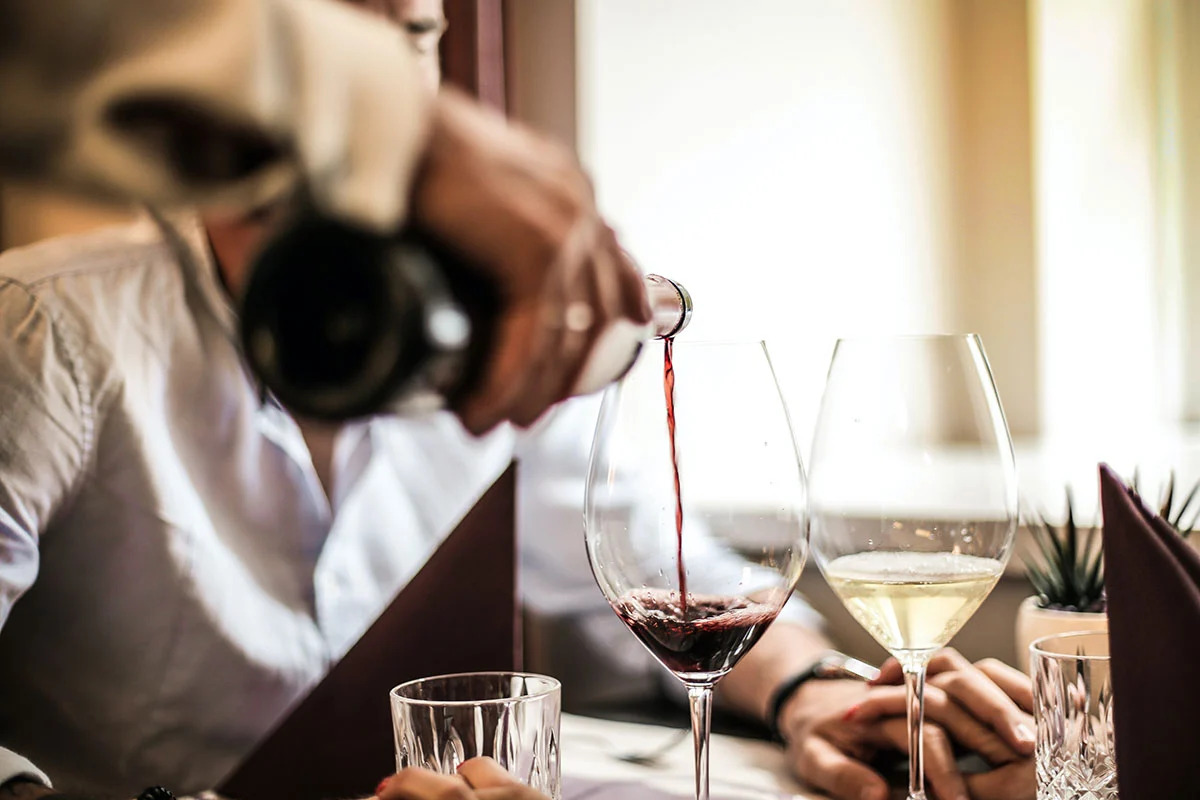
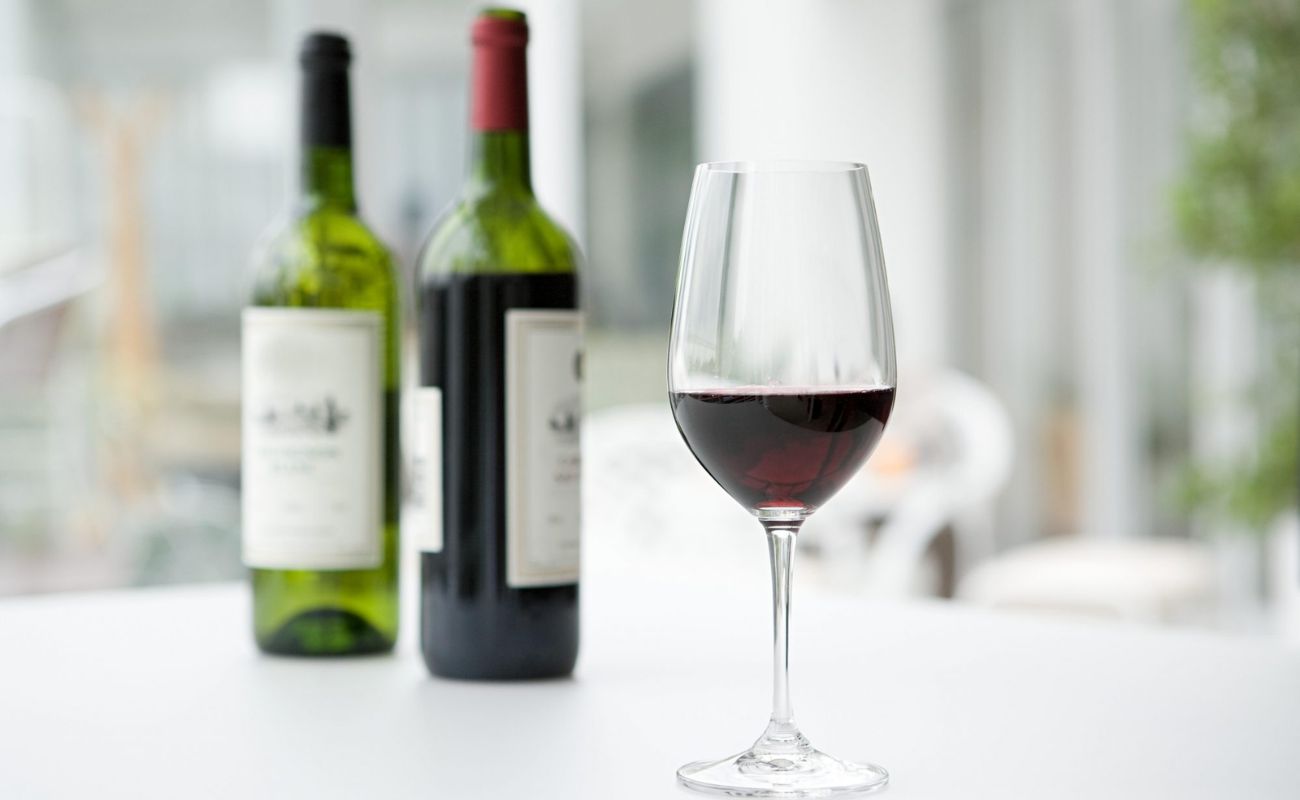
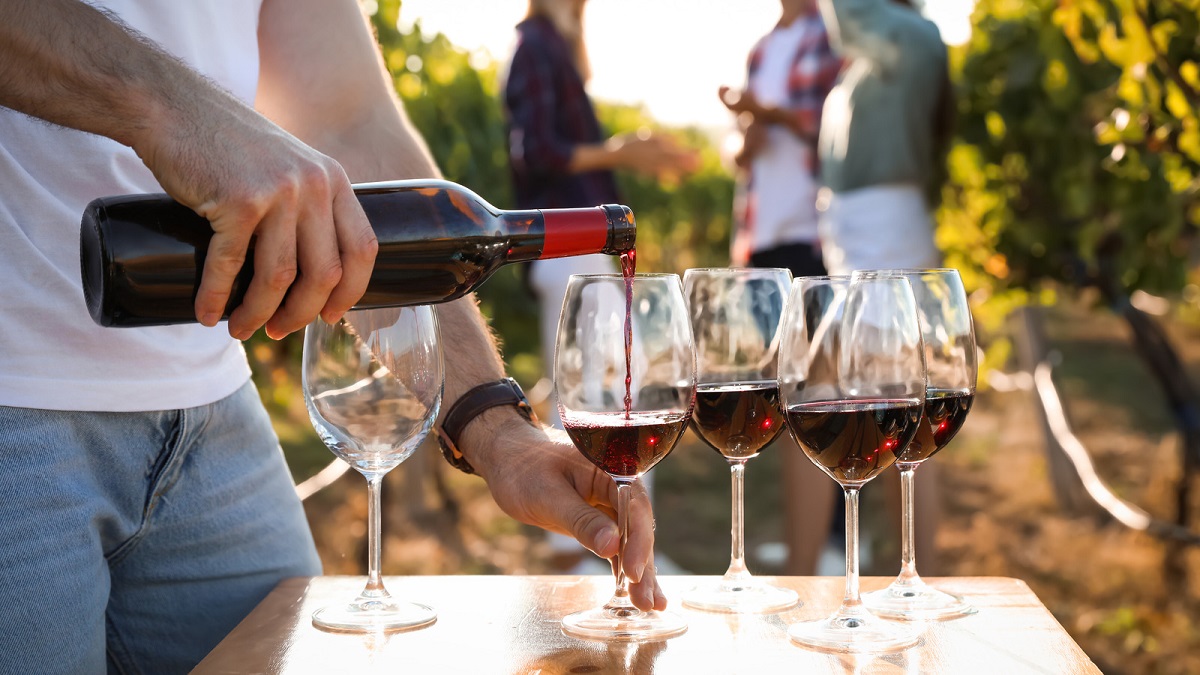
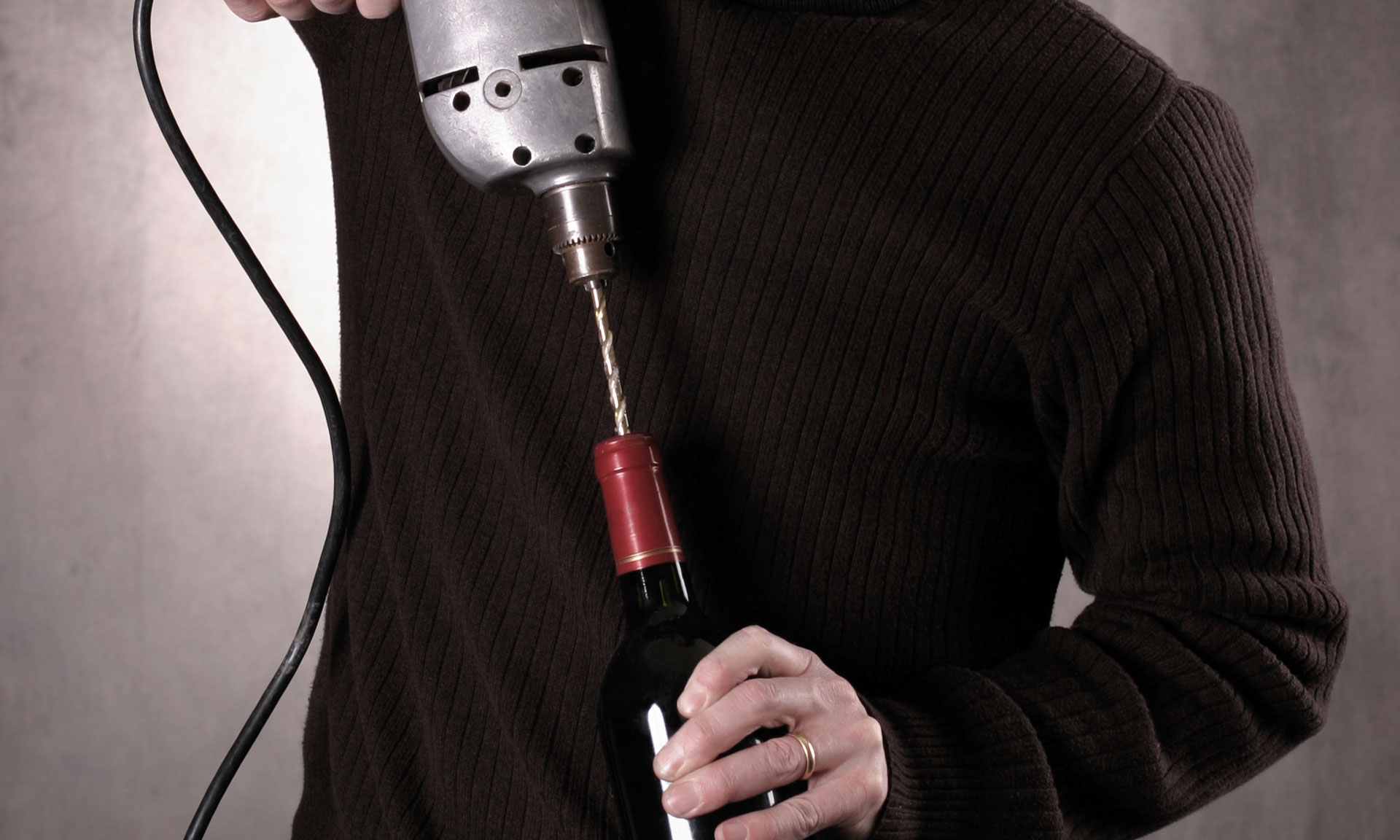
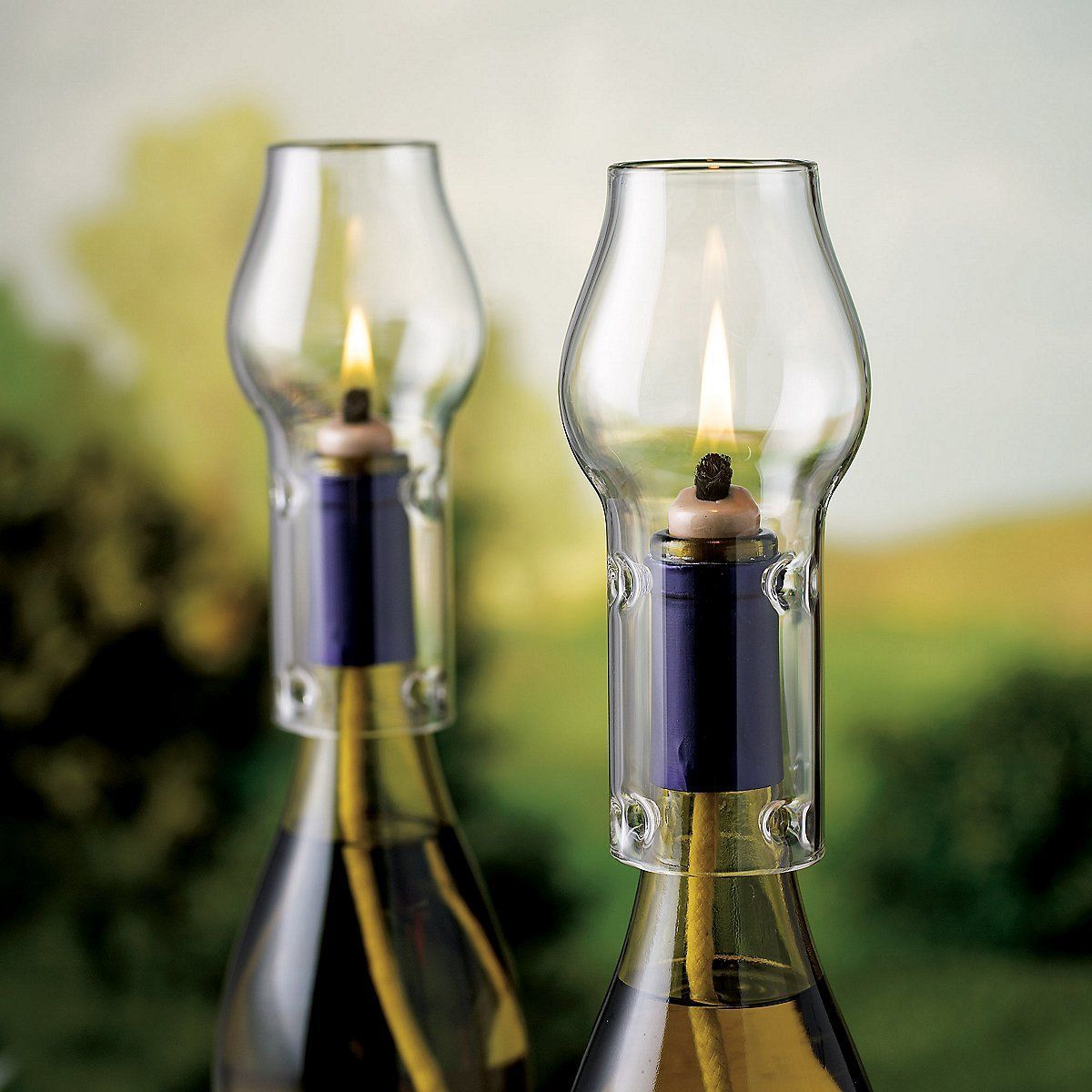
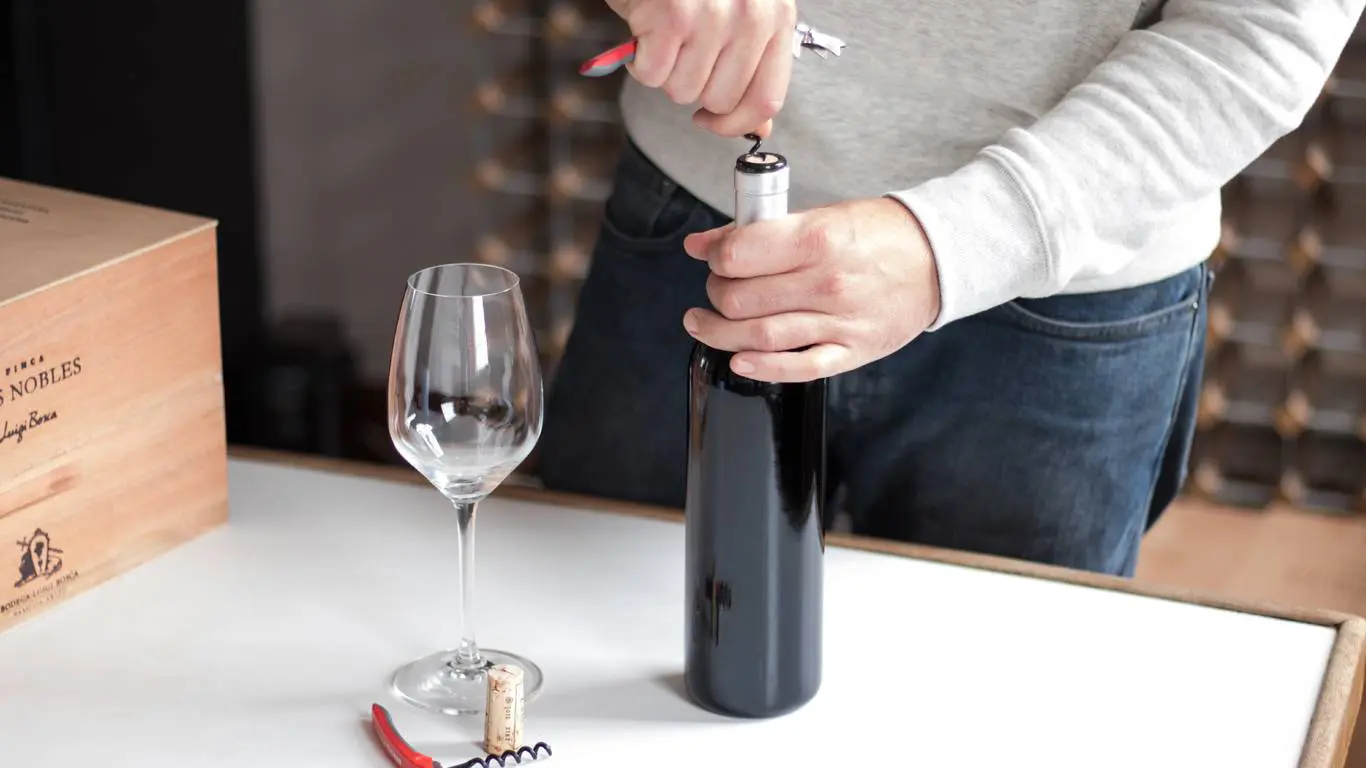
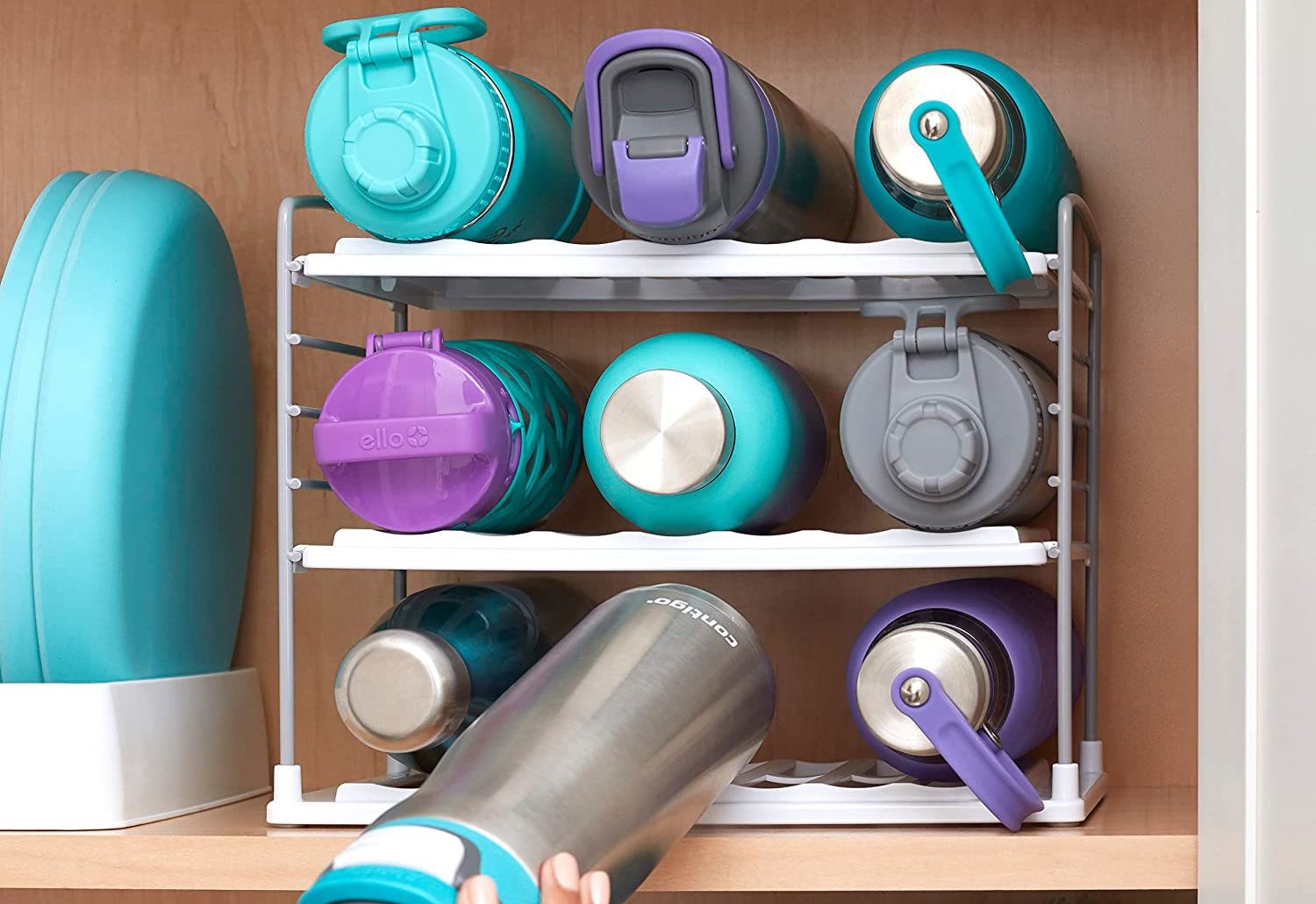

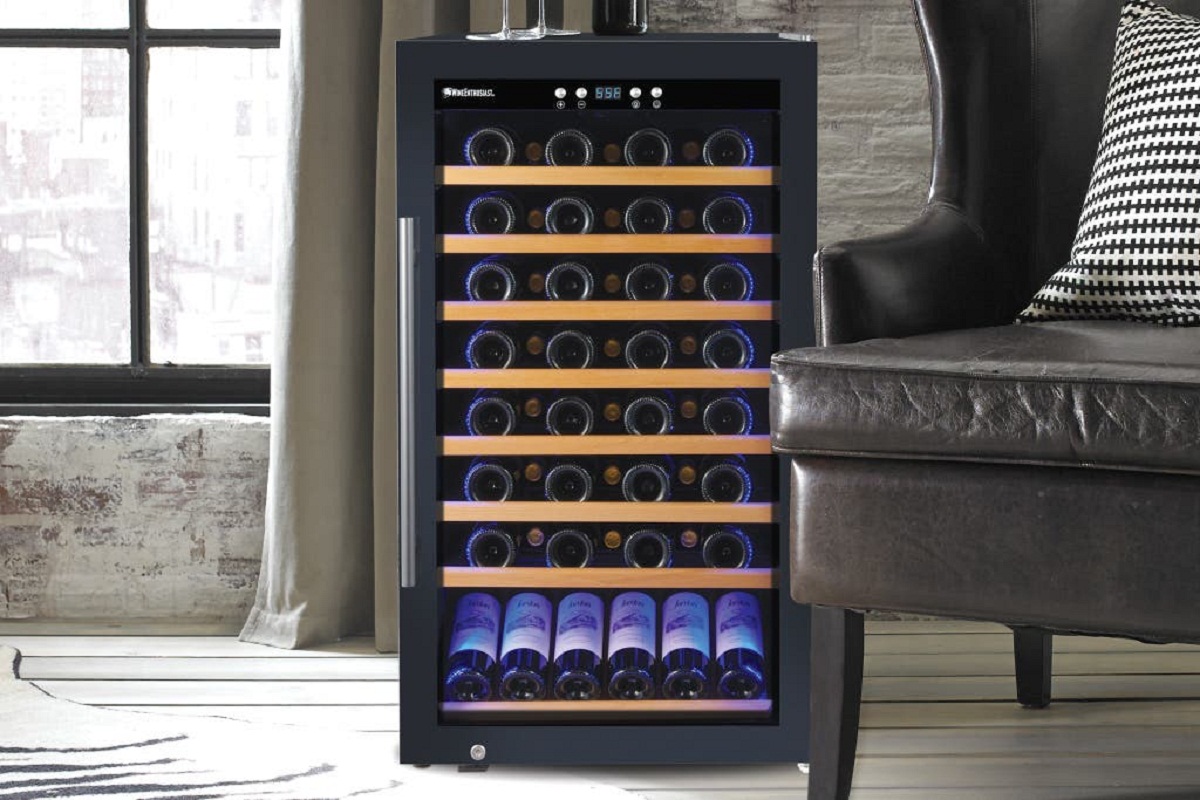
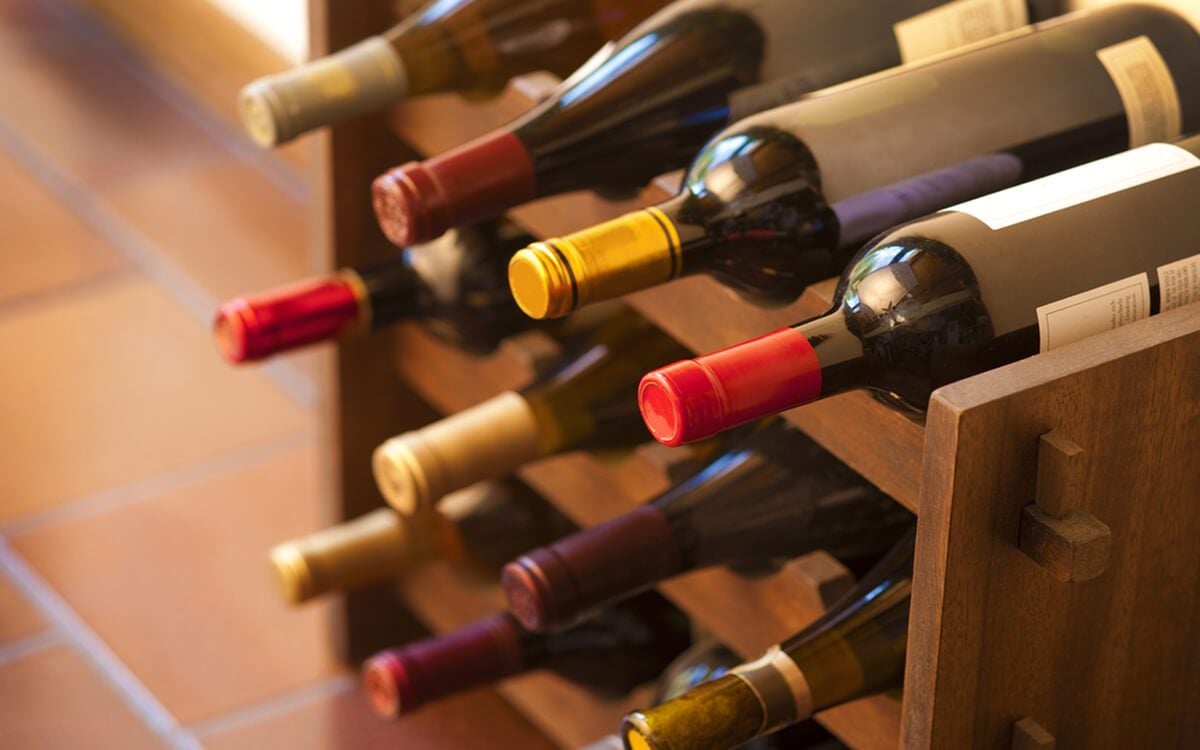
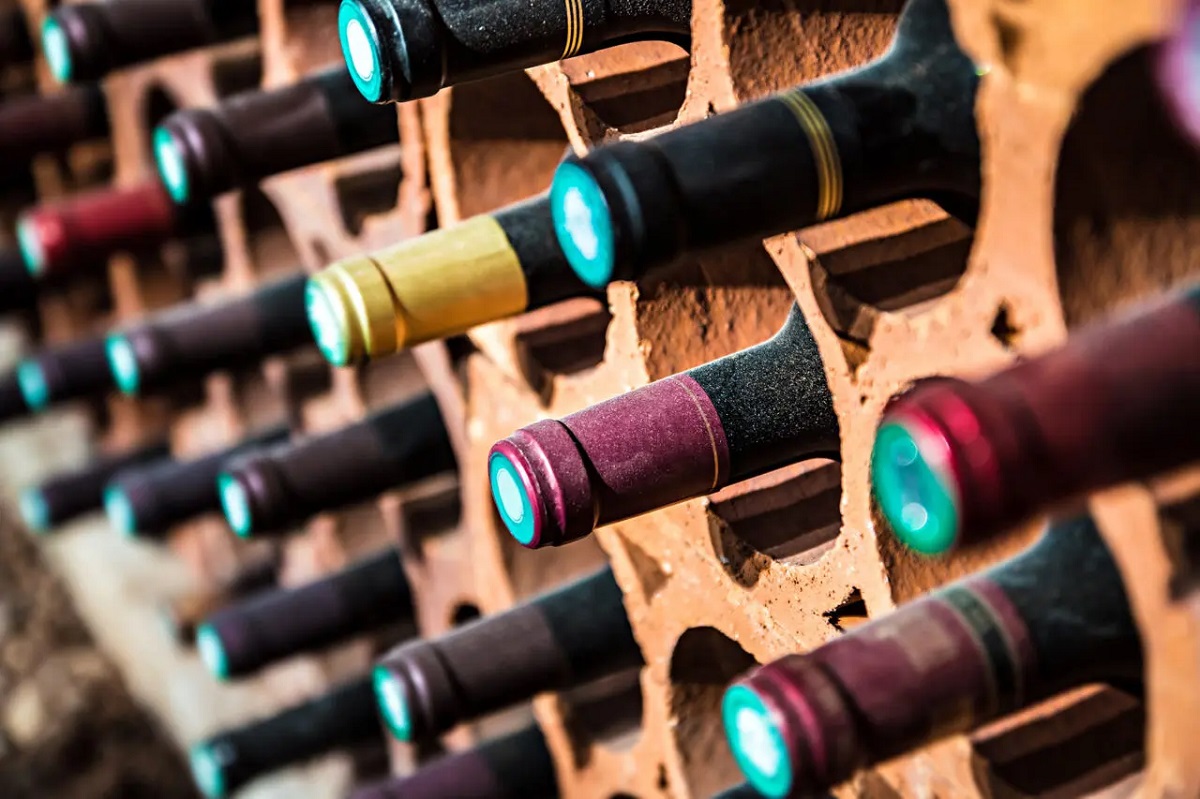
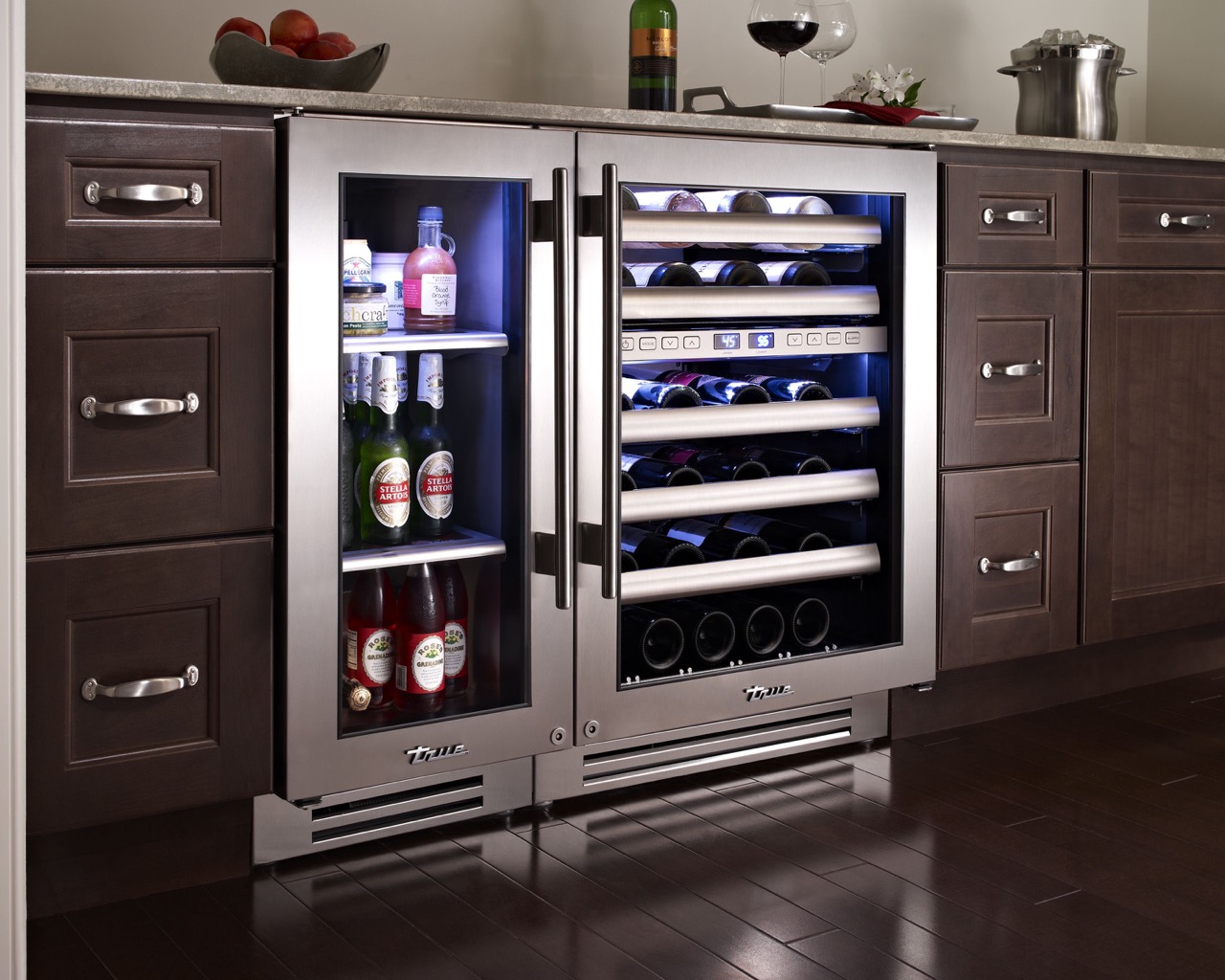

0 thoughts on “How To Store Wine Bottles”